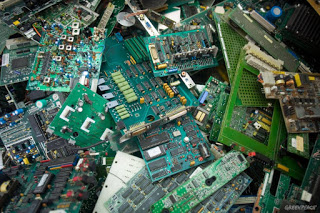When we discuss Circular Economy, most of the times, the discussion is about global supply chains and the substantial savings that can be achieved through redesigning and reshaping industrial processes that involve potentially or already scarce materials. Many times, according my experiences, such a discussion seems somehow “exotic” or indifferent to normal people and many decision makers. Because, actually, it means almost nothing for their region or municipality, unless they host one of the multinational leaders that has established a local (part of its global) supply chain and industrial processes. Such a discussion, usually, results in what we call “spray and pray” regarding Circular Economy: we spray people with wishes about Circular Economy and pray that they will understand and apply them.
But here is a very simple thing we can do about Circular Economy and for a Wasteless Future. We must talk to each and every community about the one thing they can certainly do, we should ask them for a contribution that it is definitely positive and local, we need to ask them to be bold in a simple, easily understood, high educational but still enormously effective closed loop. Closing the loop for the organic fraction involved in municipal and food waste is the main, and in many cases the only one available, measure that enables Circular Economy on a local level, no matter how rich, populated, urbanised or globalised it is. I am really sorry to say that this dimension of Circular Economy seems to be somehow lost in the overall discussion, although it is the most important way to involve almost everyone in an effort towards an improved resource management.
According ISWA’s report “Circular Economy: Carbon, Nutrients and Soil“, within OECD countries, an estimated 177 million tonnes of organic municipal waste is generated annually, of which only 66 million tonnes is recycled through composting and anaerobic digestion. Assuming an overall maximum capture rate of 70%, this means that potentially 124 million tonnes a year of municipal organic waste could be collected for biological treatment, which equates to an additional 58 million tonnes a year over and above what is currently collected. The potential for organic commercial and industrial wastes, crop residues and manures is largely unknown but is likely to be considerable and well in ex- cess of the municipal waste fraction. The resources contained within this 124 million tonnes of municipal organic waste are significant, holding anywhere between 0.1 to 3 million tonnes of nitrogen and 4 to 41 million tonnes of carbon.
Fortunately for the planet, there are many positive examples and good practices that can be easily shared. Have a look here for some examples and case studies for several municipalities or here for what you can do at your home. Or read what several companies are doing for food waste or what supermarkets have started to do in different countries.
Allow me to speak a little bit about the obvious, but not always well communicated, benefits.
According the European Compost Network, closing the loop of the organic fraction provides 3 main advantages. 1. It closes biological material and nutrient cycles, and reduces the linear economy of landfilling waste. 2. It produces bio-based products which can replace scarce resources and fossil based products such as peat, mineral fertilisers and fossil fuels. This will reduce reliance on the importation of these resources and the use of compost will have long-term beneficial effects on soils. 3. It creates sustainable jobs at local level and job opportunities are created for future generations. For every 1 million tones of biowaste that is composted or digested anaerobically, it is expected that 200-500 new jobs are created!
Actually, biowaste management is one of the activities that substantially improve the social footprint of Circular Economy because it is local, controlled by communities and creates a direct and first-hand impact.
ISWA’s Task Force on Resource Management mentions that across the OECD, taking into account actual compost/digestate production, somewhere in the region of USD 121 million in nutrient value is currently being realised annually, which could increase to USD 227 million per annum if all municipal organic wastes were captured for recycling.
Last but not least, please do not forget the substantial climate benefits. According the European Environmental Agency report “Waste opportunities – Past and future climate benefits from better municipal waste management in Europe“, the implementation of the EU Landfill Directive, which concerns mainly the diversion of organic fraction from landfills, the potential life-cycle GHG emissions from municipal waste management in 2020 could be cut by a 62 million tonnes, which equals 1.23 % of the total EU GHG emissions in 2008. A complete ban on landfilling could cut emissions even further, reducing potential net emissions from waste management in 2020 by 78 million tonnes compared to 2008 — an amount slightly greater than Hungary’s total emissions in 2008.
Still waiting? Please run and start your local contribution to Circular Economy right here, right now!






